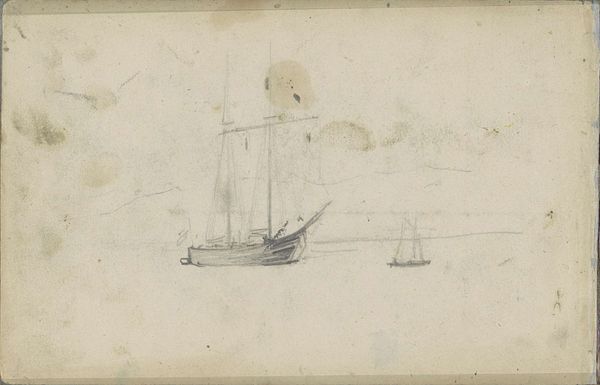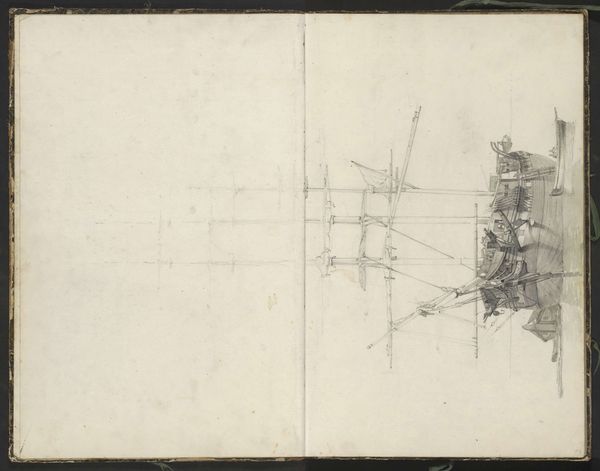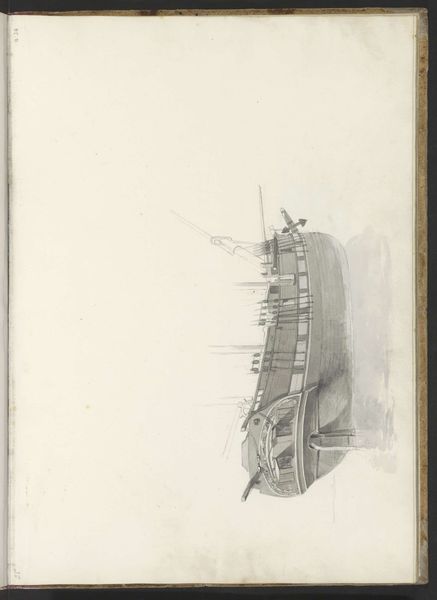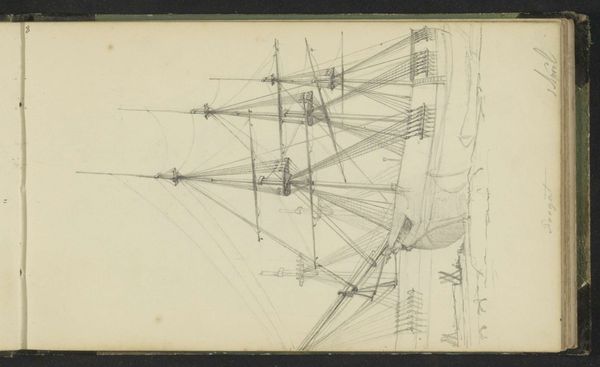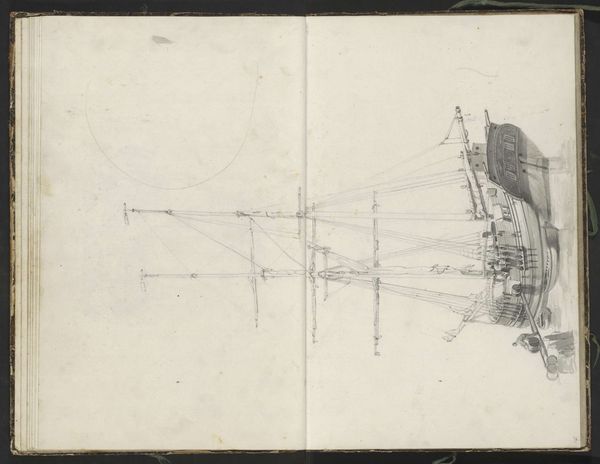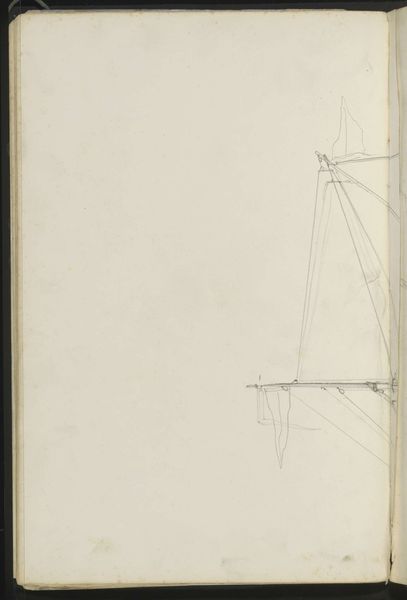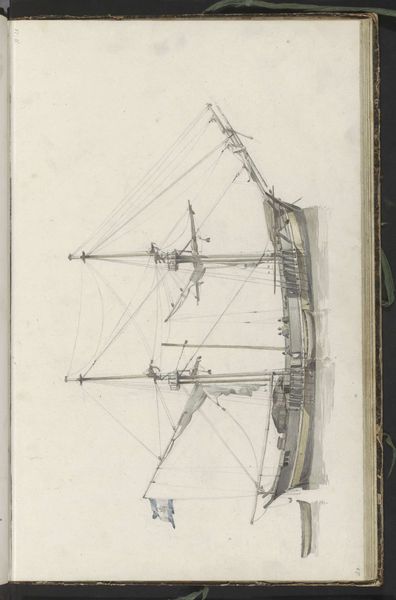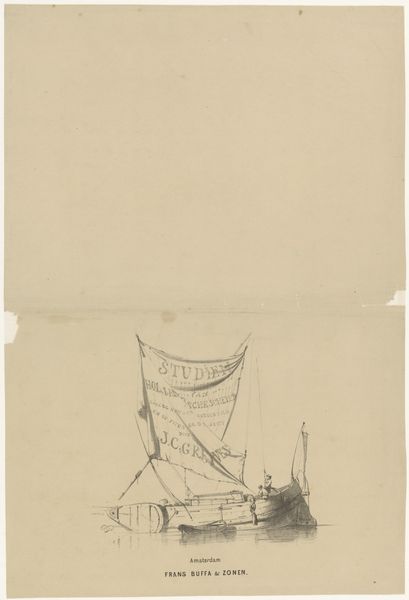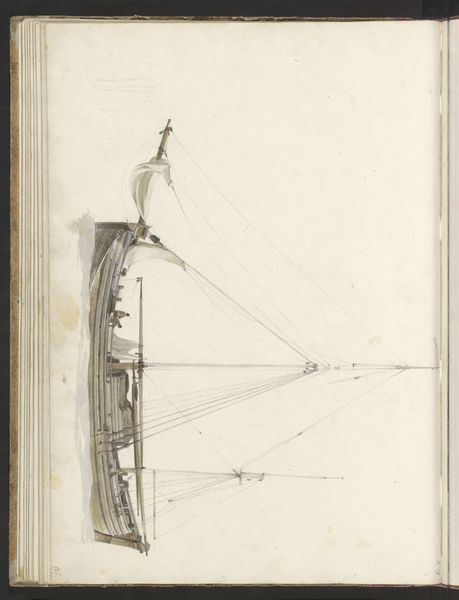
drawing, ink, pencil
#
drawing
#
pen sketch
#
sketch book
#
incomplete sketchy
#
hand drawn type
#
landscape
#
personal sketchbook
#
ink
#
ink drawing experimentation
#
pen-ink sketch
#
pencil
#
line
#
pen work
#
sketchbook drawing
#
sketchbook art
Copyright: Rijks Museum: Open Domain
Curator: Before us is a sketch, found in a sketchbook, titled "Zeilschip voor anker bij een meerpaal," which translates to "Sailing Ship Anchored by a Mooring Post," created by Johannes Christiaan Schotel. The Rijksmuseum places its creation somewhere between 1797 and 1838. It’s rendered in pencil and ink. Editor: My immediate impression is one of sparseness. The blank left-hand page emphasizes the skeletal precision of the rigging, almost like a musical score waiting to be filled with the wind's composition. It's about suggestion rather than a fully realized picture, focusing almost clinically on line. Curator: Precisely! Note how the artist employed minimal shading, really just pure line work. This emphasizes a particular understanding, where symbolic clarity surpasses literal depiction. It speaks to a cultural memory of the sea. These ships carried a certain weight for the Dutch, and here, it is reduced to its essence. The pen is like a surgeon's tool, mapping trade routes, colonial power, but on a very personal scale. Editor: And let’s consider Schotel's possible social position and economic connections. Sketches like this are studies and yet they demonstrate an element of technical labor: the practice involved in shipbuilding. We see the knowledge that resides in his hand, mediating skill through line, craft reduced, and reproduced for study, and likely for later transformation in an atelier into something else. Was this sketch preparatory or exploratory? It asks what the conditions are to arrive to fully finished paintings with wide market appeal. Curator: Perhaps both? It’s tempting to read into this drawing the uncertainty of the era. The Netherlands experienced massive upheaval in the period this work was made, from French occupation to the establishment of the Kingdom. The anchored ship— a recurring motif across Dutch art—can carry that historical resonance, a silent witness resting on the waters, tethered and in anticipation. Editor: But its very incompletion resists easy symbolic reading! It pulls back the curtain, or opens the covers as we see here, of a working practice in which sketches act as vital parts in larger economic networks in painting. The work embodies process itself! Curator: I concede the image refuses closure; perhaps, that's its enduring power. The suggestion is itself the substance. Editor: Ultimately, both the precision and the provisional quality combine in its affective force.
Comments
No comments
Be the first to comment and join the conversation on the ultimate creative platform.

